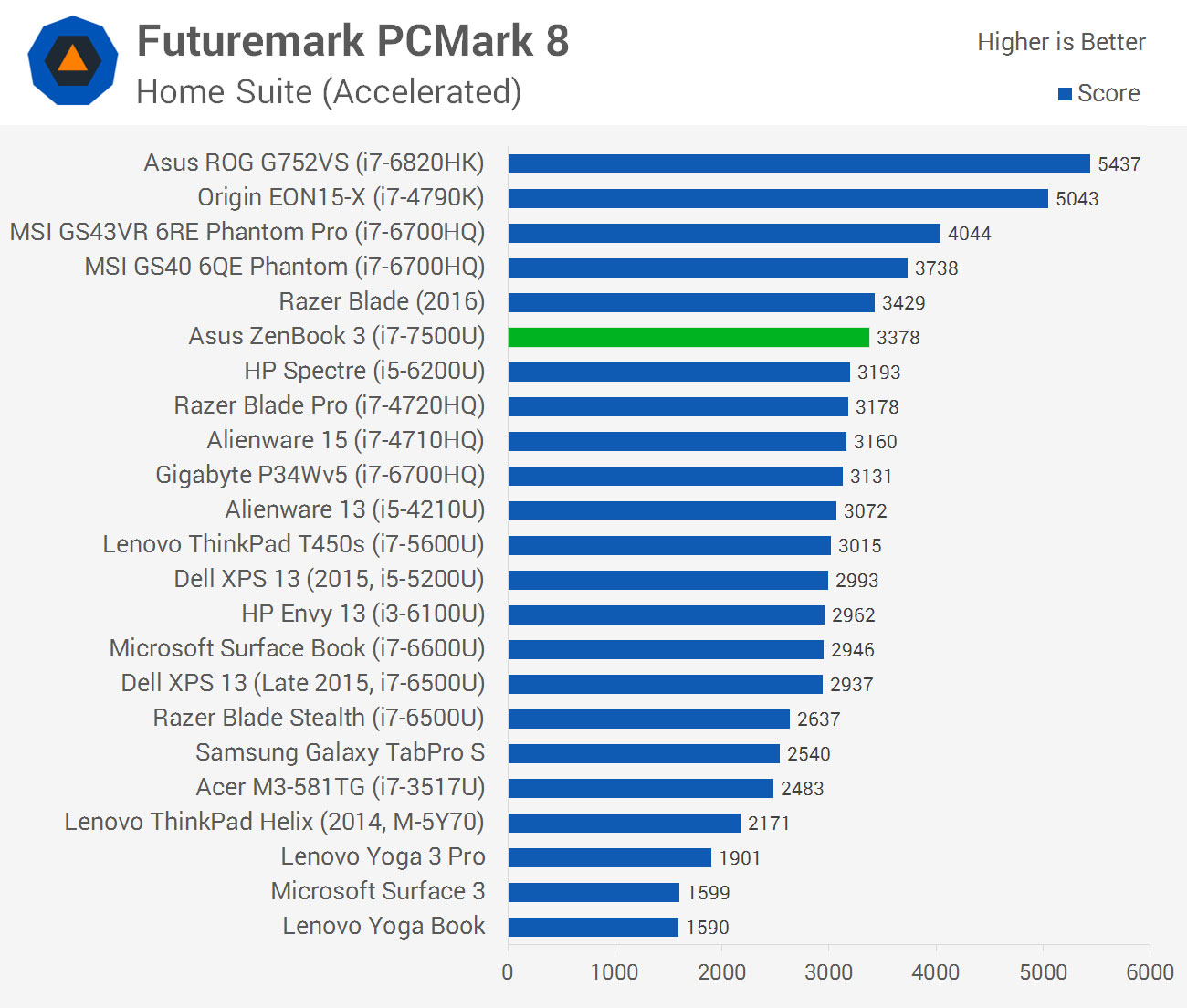Asus ZenBook 3 Review > Hardware Overview and System Performance
Hardware Overview and System Performance
The ZenBook 3 is the first laptop I've tested this year that uses an Intel 'Kaby Lake' processor. Succeeding Skylake, Kaby Lake is Intel's third 14nm processor family, and the kickoff to intermission away from the visitor'south long-held tick-tock schedule.
While Kaby Lake is a 14nm function, it's manufactured using an improved (14FF+) process that brings efficiency improvements at the same clock speeds as Skylake. While Kaby Lake has roughly the same IPC as Skylake, all Kaby Lake parts are clocked a few hundred MHz higher than their Skylake counterparts while still fitting into the same ability consumption bracket.
The ZenBook 3 is available in two configurations with differing processors, RAM and storage (although these may vary by region):
- $1,099: Cadre i5-7200U, 8 GB of RAM, 256GB SSD
- $i,599: Core i7-7500U, xvi GB of RAM, 512 GB SSD
Asus provided me with a model that isn't available in the Us (at least on Amazon), as it packs the faster Core i7-7500U and a 512 GB SSD but only viii GB of RAM. I'd prefer xvi GB of RAM for heavy professional workloads, but for the most function I didn't run into any memory-related issues with just 8 GB.

The Core i7-7500U is a 15W Kaby Lake part with ii cores and four threads clocked at 2.7 GHz with a single-core heave frequency of 3.5 GHz. Relative to the Skylake Core i7-6500U, we're seeing a 200 and 400 MHz increase on base of operations and boost clocks respectively. In my testing, I as well observed a cursory two-core heave frequency of iii.3 GHz with a sustained boost of two.9 GHz.
On the graphics side, Intel has moved from their Hard disk drive Graphics 520 chip to the Hard disk Graphics 620 at the same clock speed of ane,050 MHz. The HD Graphics 620 packs new features, such as ten-flake HEVC encoding and viii-bit VP9 encoding, but equally the number of execution units remains the same (24), performance gains shouldn't be expected.
Equally for the base model with its Core i5-7200U, you'll exist getting the aforementioned ii cores and 4 threads, only clocked at 2.v GHz with a heave of 3.1 GHz, and a slight decrease in HD 620 graphics frequency to one,000 MHz. L3 enshroud has besides decreased from 4MB to 3MB.








There are some interesting things to notation here about the ZenBook three's performance. Firstly, in full general, the laptop is around seven percent faster than both the i7-6500U-equipped Dell XPS 13, and the i7-6600U-equipped Surface Book. This isn't a massive performance improvement, and information technology's entirely due to the faster clock speeds of the Kaby Lake CPU.
However, at that place are some circumstances where the i7-7500U is non faster than its predecessor. In heavily multi-threaded workloads, Kaby Lake either broken even or recorded a small-scale (1-2%) operation reduction compared to the equivalent Skylake i7-6500U. This is downwards to the fact that Skylake sustains slightly higher dual-core boost clock speeds: 3.0 GHz rather than 2.9 GHz on the i7-x500U model.
In unmarried-threaded workloads, the 400 MHz increase in boost clock speeds leads to gains of around 16 pct, which is decent. This is where Kaby Lake pulls away from Skylake, and it's why the ZenBook 3 reports better performance in benchmarks like PCMark.
It'south worth noting that Kaby Lake isn't going to provide significant increases in encoding performance over Skylake, and then unless yous're moving from Core i5 to Core i7, await similar encoding times in Premiere and other video editing tools. On the flip side, simulation software like MATLAB saw gains of 15 per centum, which is downwards to improved single-cadre performance.
Source: https://www.techspot.com/review/1284-asus-zenbook-3/page3.html
Posted by: urenogotand.blogspot.com


0 Response to "Asus ZenBook 3 Review > Hardware Overview and System Performance"
Post a Comment